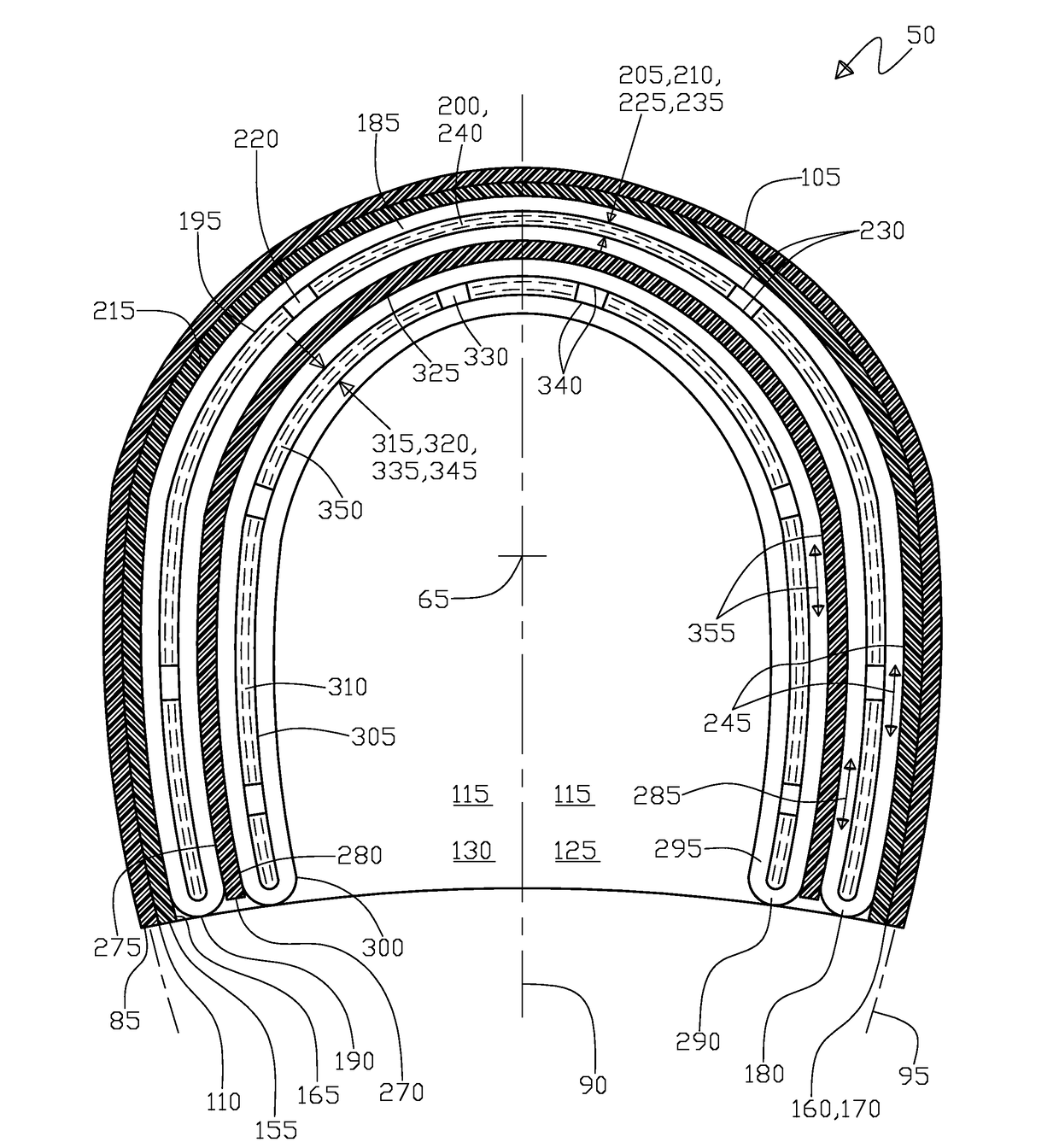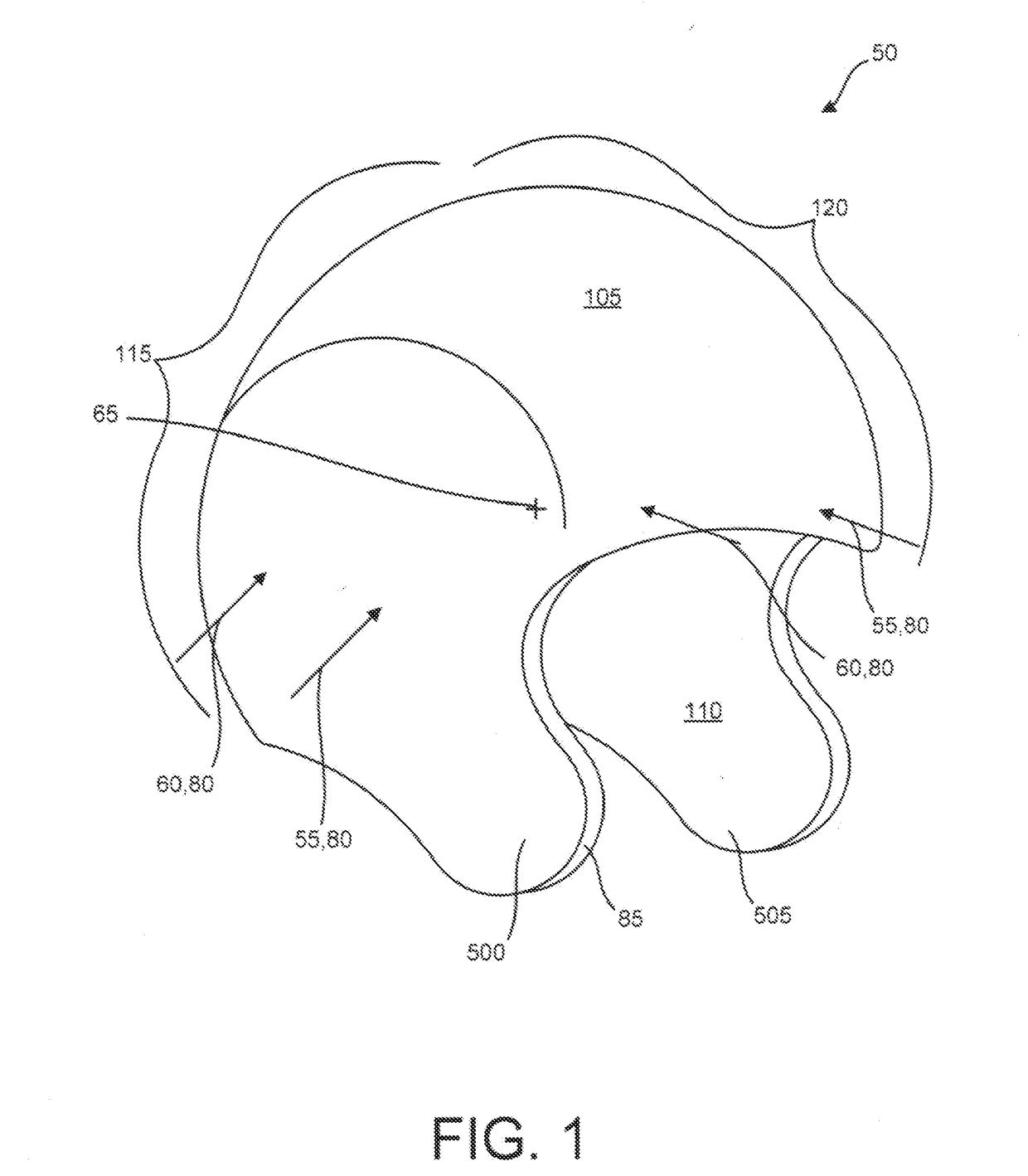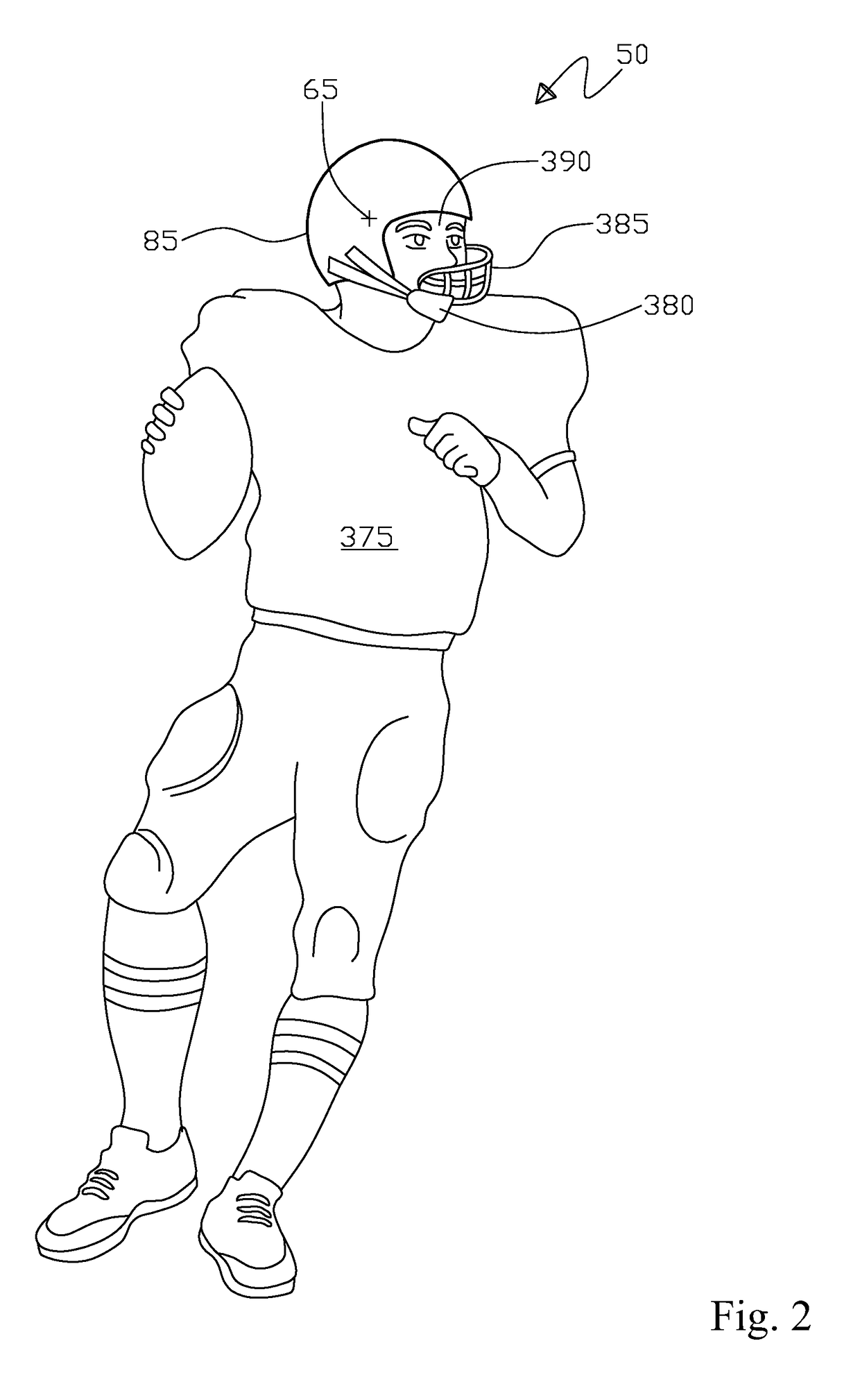However, as common as helmets are in everyday life, very little specific study and modeling has been done to optimize helmet design based upon the unique type of impacts that a helmet may receive in all the different various helmet uses, wherein typical helmet design includes a rigid outer shell, a layer of foam padding inside of the shell (or one-time collapsible Styrofoam type material), and a retention strap to secure the helmet to the head.
Looking specifically at football helmet design, a first challenge is that it cannot be one-time impact disposable which would allow for materials that absorb
impact energy while destroying themselves as the multiple impact use of the football helmet requires that the
impact energy absorbing materials must regenerate themselves in a relatively short amount of time-say 30 seconds or so to be ready for a subsequent impact-thus this is a major factor in the design of the football helmet that distinguishes the football helmet from most other helmet designs that are one time
crash disposable.
Further challenges in football helmet design relate to the omni-directional nature of the impact and the elliptical type shape of the helmet that causes the impact that comes from any direction to have an almost arbitrarily high
coefficient of restitution effect on the forces that the helmet experiences, being a multitude of forces in different directions in addition to rotationally twisting or torsional moments that are initially experienced by the shell that then translate to the helmet liner and further to the skull and then to the brain.
Also, unfortunately higher coefficients of restitution exist in helmet to helmet contact being the primary impact, wherein lower coefficients of restitution exist in helmet to ground contacts or helmet to shoulder, arm, leg,
torso, or foot contacts.
In addition, there are other complications with rebound
inertia effects from the original impact and the fact that the original impact can be followed by a quick sequence (within a fraction of a second) of additional impacts from other directions, i.e. a player getting hit by 3-4 other players in a single play in the helmet area.
So in summary, on the impact side we can have impacts from any direction that can be multiple in rapid sequence occurring on a non-symmetric helmet shell that can result in a multitude of multi-directional forces, rotations, and
inertia rebounds that make up the
kinetic energy factors that the helmet is trying to reduce as it translates to the brain, thus making the kinetic energy factors difficult to predict.
As the brain is buoyantly suspended in a
plasma type fluid (
Cerebrospinal Fluid) disposed within the skull, further wherein the brain itself has a Jell-O like consistency, it is difficult to be precise about how
brain damage from kinetic energy actually occurs, recent thinking is that instead of the brain bruising itself as against the inside of the skull, the brain actually has deep internal stresses (being compression, tension, and shear), that act to damage the delicate
nerve cells and their connections being the axons, from the kinetic energy, however, there is currently no technical way to detect this deep brain damage in a living subject, as only when the brain is dissected post mortem can damaged
brain tissue be discovered.
The reason for the difficulty in brain
damage detection is that the brain damage is non-structural and does not cause bleeding-thus being invisible to CT and MRI testing, however, there is promise in detecting
tau protein that binds to a tracer that can be indicative of brain damage, thus allowing testing
in vivo, currently this
in vivo testing is not considered reliable enough being still in the trial phase.
However, it cannot be definitively defined how many kinetic energy dissipating episodes the brain needs to experience or the severity (kinetic
energy level) of each episode to cause CTE, all that is known is that the kinetic energy episodes are additive in their brain nerve
cell damaging effect.
However, it is now known that brain damage can occur without skull fracture, so the helmet protection must extend beyond preventing skull fracture, especially in the rotational factor of the kinetic energy where it is suspected that the most brain nerve
cell damage occurs, possibly because this puts the brain damage mostly from shear as opposed to compression and tension being in conjunction with most
ductile materials that have less strength in shear as opposed to compression and tension.
Severe injuries occur daily and the numbers of children playing this sport have diminished significantly in the past several years.
Tuttle does recognize the problem of
inertia rebound impact on the head, however, has no teaching as to the recovering of the chambers for quick succession subsequent impacts, nor is there any addressing of the torsional rotational impact effects.
Suddaby does recognize the problem of torsional rotation translating from the impact on the outer shell to the skull via having diaphragms disposed as between the helmet inner and outer shell that allows the inner and outer shells to move relative to one another being cushioned and controlled via the diaphragms, further inertia rebound energy is recognized also that requires the diaphragm to expand outward from the outer shell, however, potentially causing outer shell impact adherence issue with other objects that are impacted.
Ferguson being a helmet liner only does not address the rotational torsional impact issue to the skull nor the rebound inertia issue from the impact to the shell effect on the skull.
 Login to View More
Login to View More  Login to View More
Login to View More 


